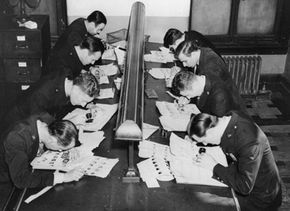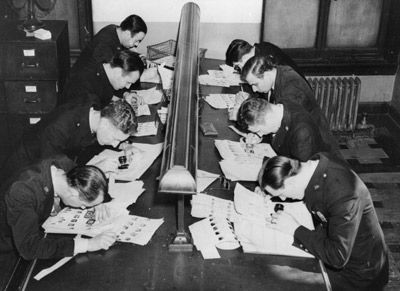A woman has been murdered. When the detectives arrive on the scene, the house is in shambles. Clothes are strewn about the floor, lamps are overturned and there's no sign of the assailant. Then, one of the detectives picks up a glass. On its side is a smudged, bloody thumbprint. He takes it down to the lab, where it's analyzed and matched to a recorded set of prints. The detectives catch their killer.
Advertisement
This scene has been replayed in one crime drama after another. Ever since scientists discovered that every person's fingerprints are unique, and police officers realized this singularity could help them catch criminals, fingerprints have been an integral part of the law enforcement process. Today, fingerprints are also used to prevent forged signatures, identify accident victims, verify job applicants and provide personalized access to everything from ATMs to computer networks.
But fingerprinting has come a long way from the days when police officers lifted prints from a crime scene and checked them manually against their files. Modern fingerprinting techniques can not only check millions of criminal records simultaneously, but can also match faces, backgrounds and other identifiable characteristics to each perpetrator.
What are the basic characteristics of a fingerprint? How long have people been using prints as a form of identification? Find out in the next section.



